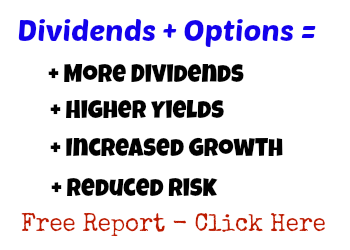High Yield Dividend Stocks
The Stock Market's Early Warning System?
Regarding high yield dividend stocks, the blogger Dividend Growth Investor wrote an excellent piece exploring the role that capital gains plays in long term dividend stock investing.
In a nutshell, if a company continues to increase its dividends every year (the foundation of dividend growth investing) even as the stock price is stagnant or falling, beware: the market may be warning of trouble ahead.
One example DGI used in his post is that of Pfizer (PFE). PFE had increased its dividends annually for 41 consecutive years. But the share price of the stock had basically been drifting lower for pretty much the entire last decade.
The current yield was around the 8-9% range when PFE announced in early February of 2009 - as part of its deal to acquire its competitor Wyeth - that it would cut its dividend in half.
Categories of High Yield Stocks
I've written elsewhere about the different categories of high yield stocks.
The three I identified were: high yielders due to share price declines; naturally or structurally occurring high yielders such as REITs, MLPs, Royalty Trusts, and BDCs; and those that become high yield over time due to dividend growth or, my preference, through an options-enhanced method (i.e. Leveraged Investing).
But it's the high yielding stocks that result from declines in share price where the income investor has to be careful.
High Yield - Low Expectations?
It's important to remember that there's an inverse relationship between the current yield of a stock and its share price. All else being equal, the higher that yield is, the cheaper the stock is trading.One of the tenets of all forms of value investing is that the stock market is, or can become, inefficient in assigning value.
Although valuing a business is necessarily a subjective process, value investors attempt to buy stocks when they consider them to be unfairly "out of favor" (e.g. Ben Graham, John Neff) or at prices where the share price does not accurately reflect the true future value of a company (e.g. Warren Buffett, Bill Miller).
In short, high yield dividend stocks due to depressed share prices is the Market's way of communicating worry, concern, or skepticism about some aspect of the future prospects of those businesses.
And take note: the higher the yield, the more skeptical the Market.
An Efficient Market . . . Or An Irrational Market?
How often the Market is right and how often it's wrong is open to debate.
But it is absolutely essential that you recognize, acknowledge, and seriously consider what the Market is trying to tell you before you commit funds to a high yielding dividend stock.
So if you see a stock yielding two or three (or more) times its historical yield, your first question shouldn't be, "How many shares should I buy?" Your first question should be, "What is the Market worried about here?"
Only then can you proceed to make an intelligent and informed decision.
Yes, the stock market can offer tremendous opportunities for patient investors, as successful contrarian and value investors have proven time and again. But it's merciless for those who are seduced by easy gains and high yields without due diligence.
You can do well by intelligently disagreeing with the Market, but if you blindly disregard its opinions, you do so at great peril to your future.
Tweet
Follow @LeveragedInvest

>> The Complete Guide to Selling Puts (Best Put Selling Resource on the Web)
>> Constructing Multiple Lines of Defense Into Your Put Selling Trades (How to Safely Sell Options for High Yield Income in Any Market Environment)
Option Trading and Duration Series
Part 1 >> Best Durations When Buying or Selling Options (Updated Article)
Part 2 >> The Sweet Spot Expiration Date When Selling Options
Part 3 >> Pros and Cons of Selling Weekly Options
>> Comprehensive Guide to Selling Puts on Margin
Selling Puts and Earnings Series
>> Why Bear Markets Don't Matter When You Own a Great Business (Updated Article)
Part 1 >> Selling Puts Into Earnings
Part 2 >> How to Use Earnings to Manage and Repair a Short Put Trade
Part 3 >> Selling Puts and the Earnings Calendar (Weird but Important Tip)
Mastering the Psychology of the Stock Market Series
Part 1 >> Myth of Efficient Market Hypothesis
Part 2 >> Myth of Smart Money
Part 3 >> Psychology of Secular Bull and Bear Markets
Part 4 >> How to Know When a Stock Bubble is About to Pop



